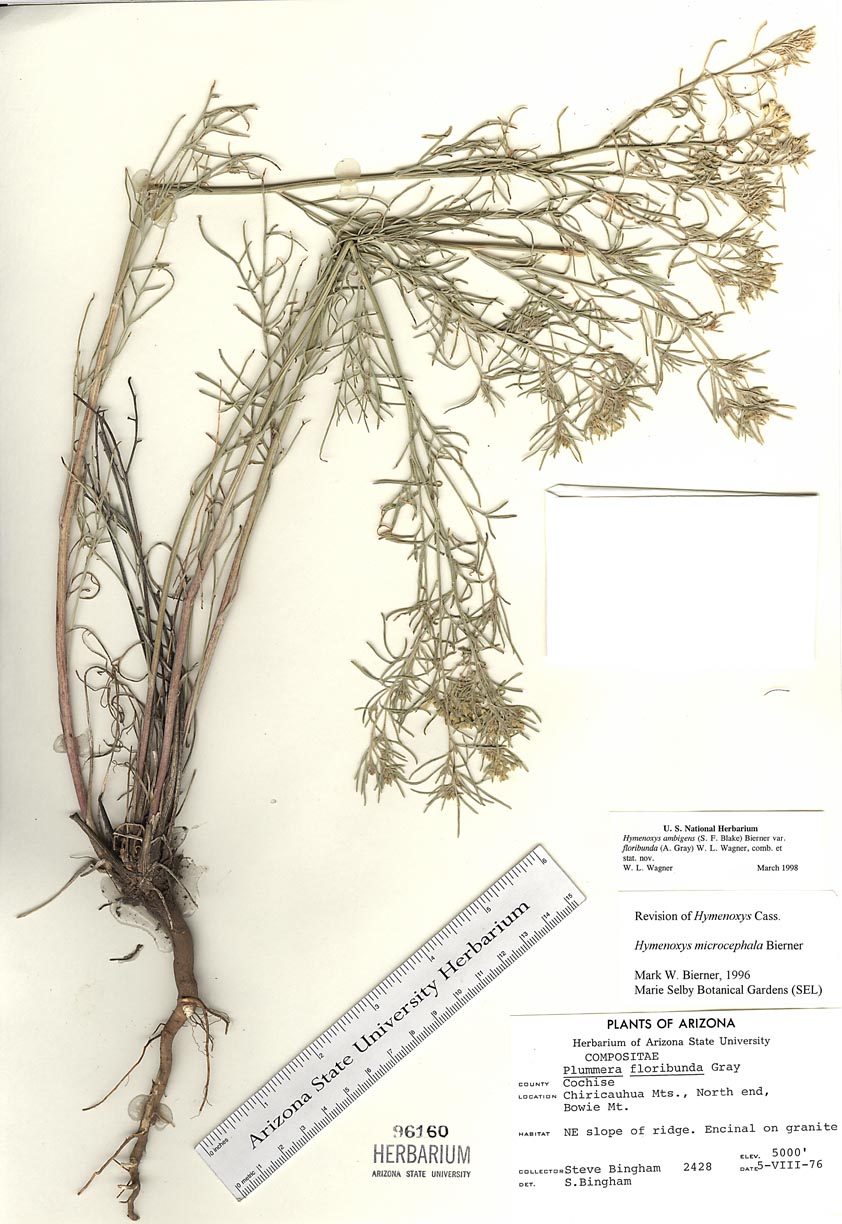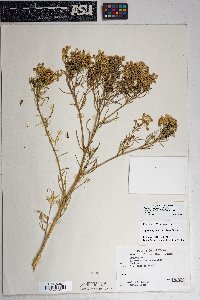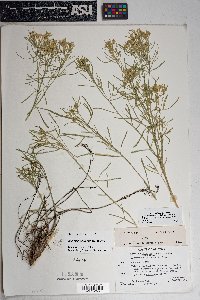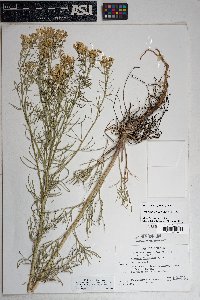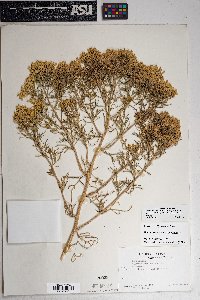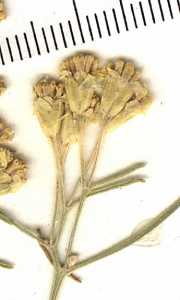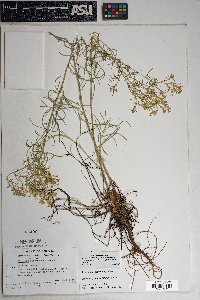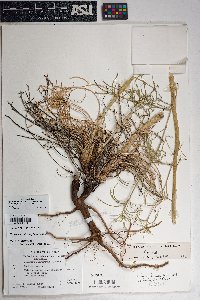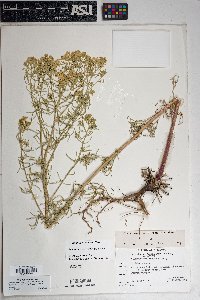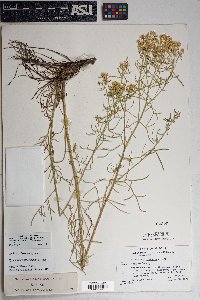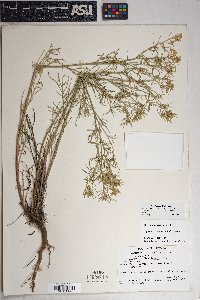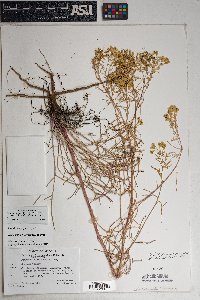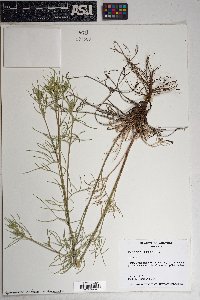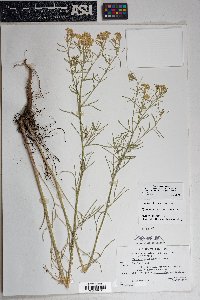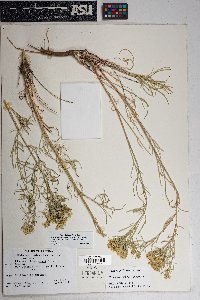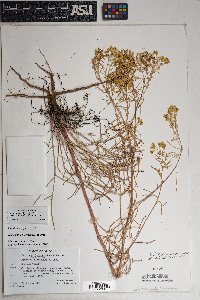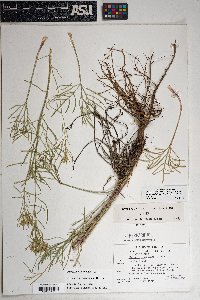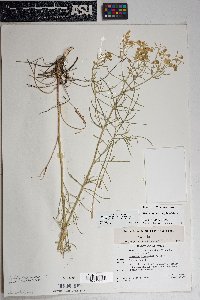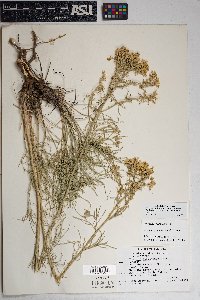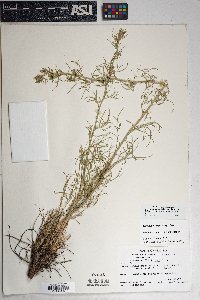
|
|
|
|
Family: Asteraceae
|
Plants 30-150 cm. Heads (25-)100-350+. Phyllaries: outer 3-4, basally connate 3/4 their lengths, 4-6 mm, apices rounded to usually obtuse to sometimes acute; inner 3-4, 3.2-4 mm, apices rounded or obtuse to weakly acute or mucronate. Ray florets 3-4; corollas 4.5-6 × 2-2.5 mm. Disc florets 6-13. Cypselae 3-3.5 mm, hairs strongly wavy; pappi 0 or of 2-4 scales 1-2 mm. 2n = 30. Flowering Jun-Oct. Savannas, oak-juniper woodlands, pine forests; of conservation concern; 1500-2300 m; Ariz. Variety floribunda is known from the Chiricahua, Dos Cabezas, Dragoon, Little Dragoon, and Mule mountains.
Wagner et al 1999, Martin and Hutchins 1980 Duration: Perennial Nativity: Native Lifeform: Forb/Herb General: Erect and rather stout biennial or short-lived perennial from a stout taproot, stems 40-150 cm tall, much branched above and aromatic. Leaves: In prominent basal rosette and cauline that are alternate, quickly reduced above, pinnatifid with filiform lobes; lower 5.5-7.5 cm long, upper 15-33 mm long, 1 mm wide. Flowers: Heads in paniculate cymes, small, radiate, yellow; involucre obpyramidal, phyllaries in two series, outer series of 3-5 ovate-oblong, carinate bracts 3.5-6 mm long, united to middle or above, inner series coriaceous, with cuspidate apex, alternating and mucronate; 3-4 ray florets, yellow, fertile, with glabrous corollas, minutely 3- lobed; disc florets 7-13, staminate, corollas funnelform, 5-toothed with densely to sparsely puberulent with short, thick hairs. Fruits: Cypselae obovoid, 15-ribbed, villous with straight or flexuous hairs, no pappus or of 2-6 unequal, oblong squamellae 1-2 mm long. Ecology: Found in rocky to sandy soils, often granitic, in open canyon floors or on slopes from 4,500-7,000 ft (1372-2134 m); flowers July-November. Notes: In the mountains of southcentral and southeastern Arizona and southwestern New Mexico, there are three varieties: var. floribunda, var. ambigens, and var. neomexicana. In our parks, var. floribunda is distinguished by the 3-4 outer involucral bracts, the pappus scales 0-4, and the apex of inner set truncate to mucronate while the hairs on the achenes are flexuous. The other varieties are found only in the Pinaleno and Mescal Mountains for var. ambigens, and only in the Peloncillo and Animas Mountains for var. neomexicana. Ethnobotany: Unknown Etymology: Hymenoxys comes from Greek hymen, meaning membrane, and oxys, meaning sharp or sharp pointed, while ambigens means doubtful or of uncertain identity. Synonyms: Hymenoxys microcephala Bierner; Plummera floribunda A. Gray Editor: SBuckley, 2010 |
This project was made possible in part by the Institute of Museum and Library Services [MG-70-19-0057-19].
Powered by Symbiota

